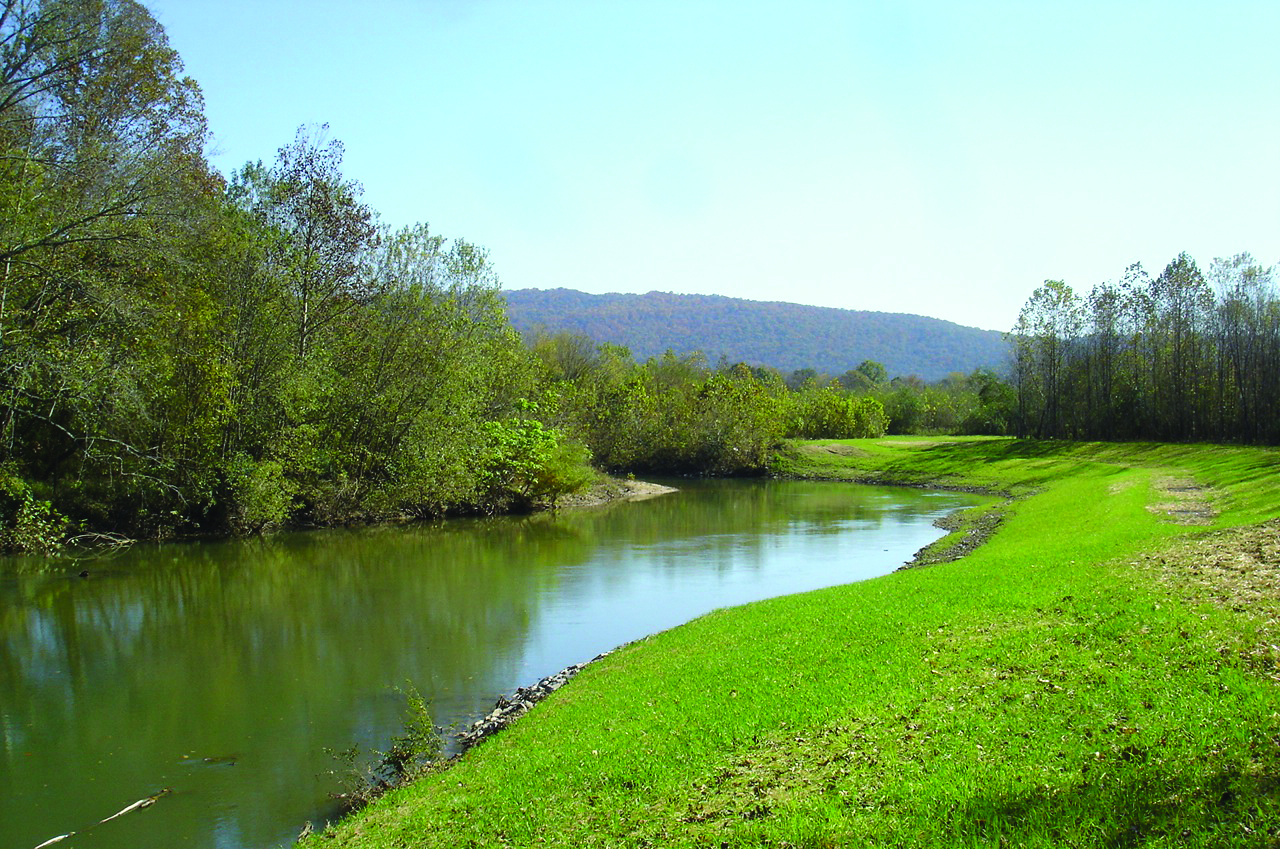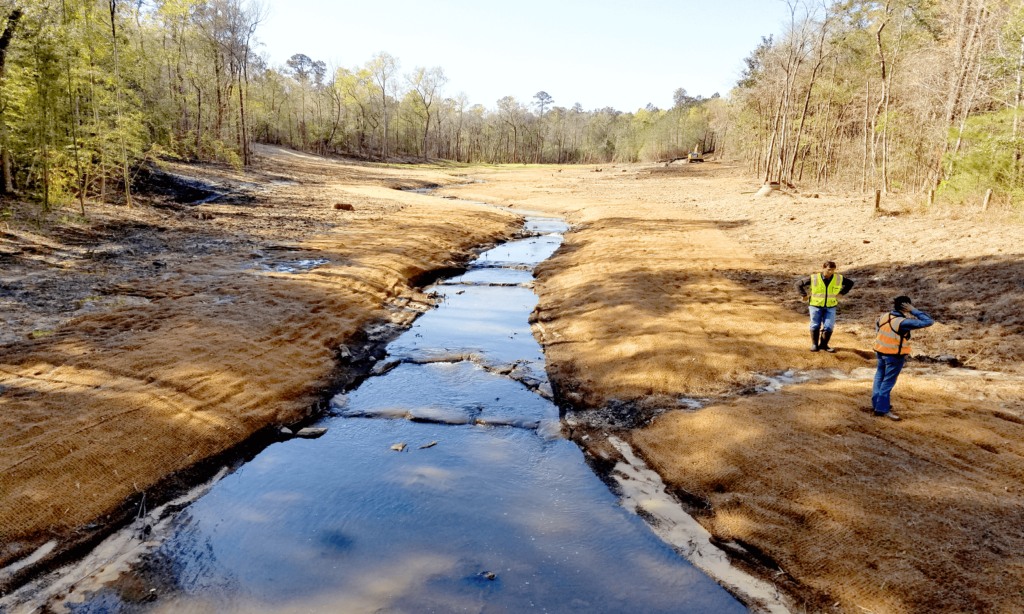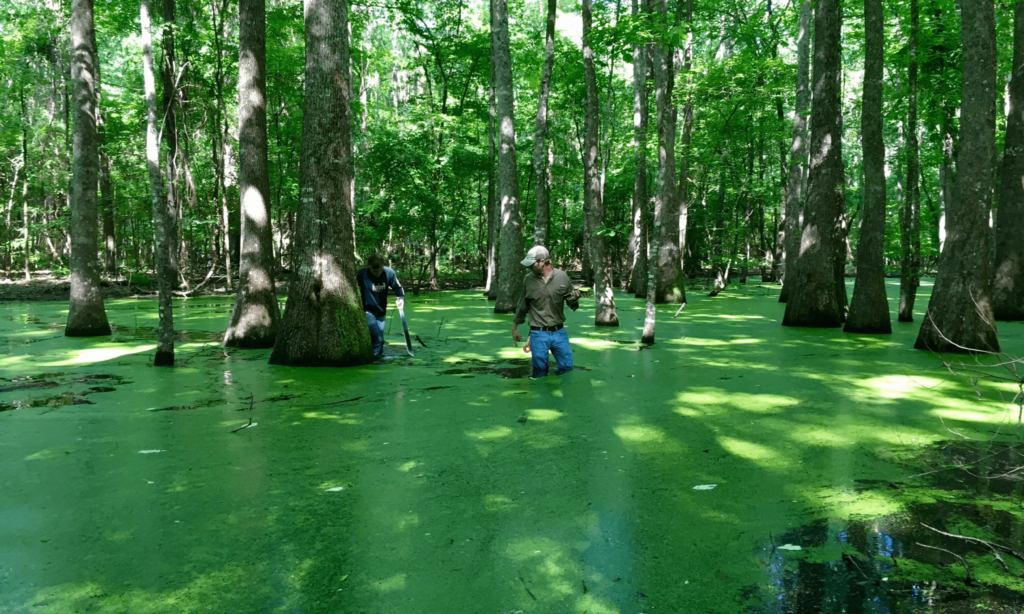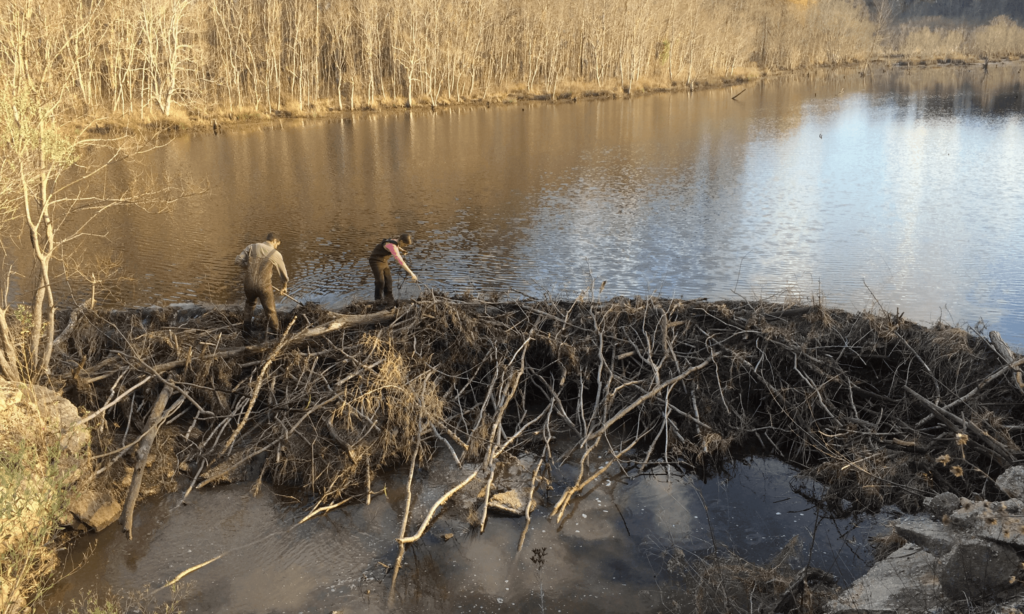GMC Environmental: a pattern of growth
February 17, 2020 · Projects

Goodwyn, Mills and Cawood (GMC) is proactively expanding its evolving Environmental Group and tapping into a growing need for multi-disciplinary services across the Southeast. Key acquisitions in Georgia and Alabama over the last few years, along with some strategic hires and promotions, have given the “one-stop-shop” design firm an unparalleled assortment of services.
It has been an exercise in synergy, as the assimilation of the various offices into a single cohesive unit has already produced a profusion of cross collaboration and knowledge sharing. Led by Executive Vice President Jof Mehaffey, GMC’s Environmental Group is spread throughout the Southeast, with team members located in Mobile, Montgomery and Birmingham, Ala.; Atlanta, Brunswick and Savannah, Ga.; Greenville, S.C.; and Nashville, Tenn.
The Environmental team’s range of services is extensive, including environmental site assessments; wetland delineations, permitting and mitigation; constructed wetland design; stream restoration design and construction; endangered and threatened species surveys; flood plain studies; stormwater management, hydrologic and hydraulic modeling; watershed management planning; GIS; mitigation banking; brownfield projects; air permitting; and landfill design and permitting, among others.
 With the addition of Ecological Planning Group in Savannah, Ga., in late 2018, the environmental team appreciably expanded its services to include, stormwater management planning, green infrastructure, in-depth flood plain modeling and stormwater utility development.
With the addition of Ecological Planning Group in Savannah, Ga., in late 2018, the environmental team appreciably expanded its services to include, stormwater management planning, green infrastructure, in-depth flood plain modeling and stormwater utility development.
The acquisition also represents a significant expansion of GMC’s geographic footprint and provides the firm with a unique opportunity to enhance the company’s portfolio. “We’re able to train our staff and further develop their expertise to expand our services to various regions. For example, one of our former EPG engineers spent time in our Birmingham office to learn about stream restoration, and one of our Atlanta team members is currently working in Montgomery to learn from our engineers there,” Mehaffey says. “This enables them to take that suite of services back to their respective regions and help us grow that part of our business.”
With its five-year growth plan still in development, GMC’s Environmental Group offers clients a more comprehensive way to approach projects that require multiple engineers, consultants and subconsultants. Most recently, team members from multiple offices within the Environmental Group were awarded floodplain modeling in Columbus, a Watershed Management Plan in Birmingham, and GIS Infrastructure mapping near Greenville – showcasing their ability to work together across regional and state lines.
 A Regional Perspective
A Regional Perspective
GMC’s Environmental Group has divided its territory into three regions – Mehaffey is over the North Region, including Birmingham and Nashville; Courtney Reich (former owner of EPG) heads the East Region, including Atlanta, Brunswick, Greenville and Savannah; and Lee Walters heads the South Region, including Mobile and Montgomery.
Walters, a 20-year GMC veteran, assists with several multidisciplinary projects and also sits on GMC’s board of directors. “There aren’t many firms that do all of the things we do,” he says. “We provide our clients with more control over the entire process – the planning, surveying, engineering, environmental, landscape architecture, etc., all working together.”
Walters’ office leans heavily on the expertise of GMC’s vast network, “pulling in folks in from Nashville, Greenville, Birmingham, Montgomery and others,” he says. “Our expertise is so much deeper now.” He also plans to leverage the recent acquisition of HMR Engineers in Daphne, Ala. – a surveying and civil engineering firm – to land additional work, as it further enhances GMC’s portfolio.
Collaboration among the firm’s various environmental regions is key to their success. The Mobile office is developing a watershed management plan for the western shore of Mobile Bay in conjunction with the Savannah office, which they collaboratively pursued together.
 The 15-month project kicked off in late spring, and marks the third project completed for the Mobile Bay National Estuary Program. The Mobile Bay NEP has been a key partner in the South Region, as it oversees restoration dollars coming into Mobile and Baldwin counties. “We’ve been fortunate to work with them on various watershed management plans, studying critical issues and developing restoration projects,” Walters says. “In the process, we’ll seek to understand the problems through meetings with the community, as well as perform data reviews and characterizations to understand the critical areas and issues. We want to identify those areas of focus for the watershed.”
The 15-month project kicked off in late spring, and marks the third project completed for the Mobile Bay National Estuary Program. The Mobile Bay NEP has been a key partner in the South Region, as it oversees restoration dollars coming into Mobile and Baldwin counties. “We’ve been fortunate to work with them on various watershed management plans, studying critical issues and developing restoration projects,” Walters says. “In the process, we’ll seek to understand the problems through meetings with the community, as well as perform data reviews and characterizations to understand the critical areas and issues. We want to identify those areas of focus for the watershed.”
Also in collaboration with the East Region, Walters’ office is assisting Mobile County in the establishment of a CRS (Community Rating System) that will enable it to obtain credits for stormwater management through the implementation of educational programs. “By having a CRS, residents could ultimately experience a 5 to 25 percent decrease in their flood insurance.”
The East Region has its own unique skillset, specializing in stormwater master planning, watershed modeling and assisting local governments with stormwater regulatory compliance, along with a host of other services. The region’s expertise in Geographical Information Systems (GIS) has been particularly useful. Used extensively in the development of watershed plans, GIS offers mapping capabilities that can be used across all GMC divisions. Further differentiating the region is its background in green infrastructure and low-impact developments, led by water resources engineer Rob Brown, PhD, PE.
The East Region also specializes in floodplain management for communities in the National Flood Insurance Program, which requires local governments to administer those programs and adopt ordinances and implement educational programs.
 The office’s portfolio of projects is extensive – including the development of a Carrying Capacity Study for the City of Tybee Island, Ga.; master plan and zoning ordinance updates for the City of St. Mary’s, Ga.; and a stormwater utility and stormwater master plan for the City of Statesboro, Ga.
The office’s portfolio of projects is extensive – including the development of a Carrying Capacity Study for the City of Tybee Island, Ga.; master plan and zoning ordinance updates for the City of St. Mary’s, Ga.; and a stormwater utility and stormwater master plan for the City of Statesboro, Ga.
Looking ahead, Mehaffey is excited about the department’s continued collaboration and ongoing development of their team members. These expanded capabilities can only serve to further differentiate the Environmental group.
“We can provide a multitude of services because of our team’s diverse training and capabilities. We are not only environmental engineers; we are ecologists, biologists, chemists, geologists, planners, and survey specialists, giving us a unique, interdisciplinary perspective,” he adds. “We’ve grown stronger over the last couple years through expansion and acquisition of staff and facilities, and we foresee many more opportunities for growth ahead.”